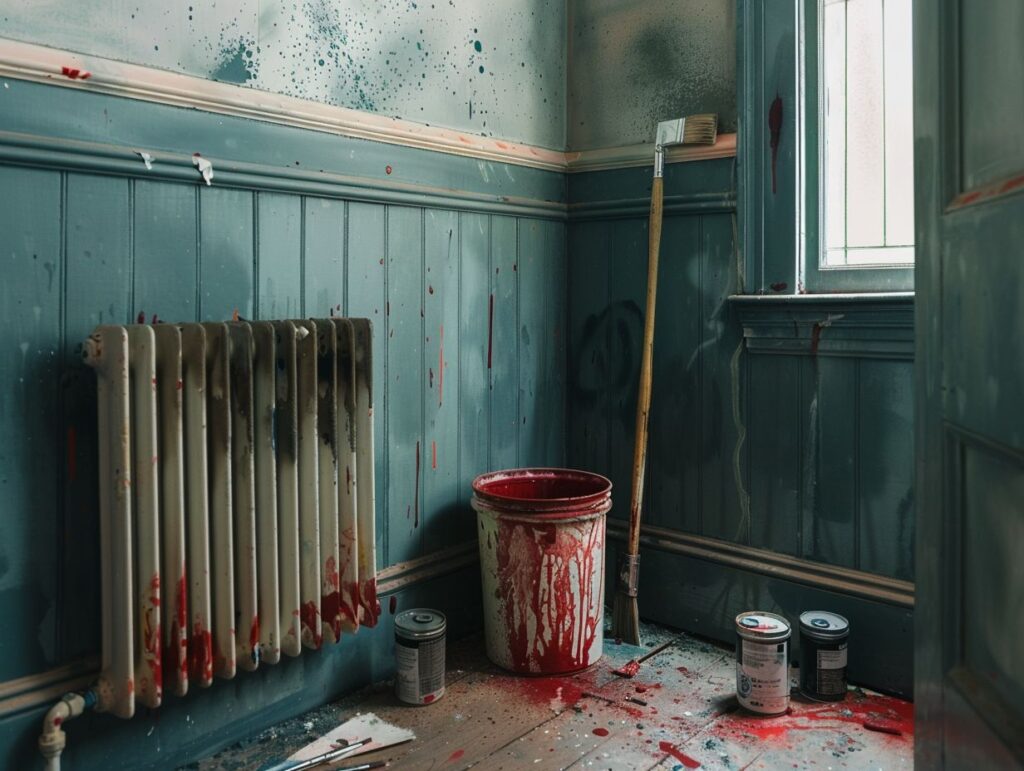If you are looking to add a pop of color to your hallway, painting your radiator could be the perfect solution for you. Before you proceed with grabbing that paintbrush, it is crucial to have a good understanding of the potential risks and precautions associated with this task.
Selecting the appropriate paint for radiators is vital in order to achieve a finish that will stand the test of time. There are various factors to consider, ranging from choosing the right type of paint to ensuring heat resistance.
This article will provide you with a comprehensive guide on how to prepare, paint, and maintain your radiator effectively, resulting in a smooth and even finish that will enhance the aesthetic of your hallway.
Key Takeaways:
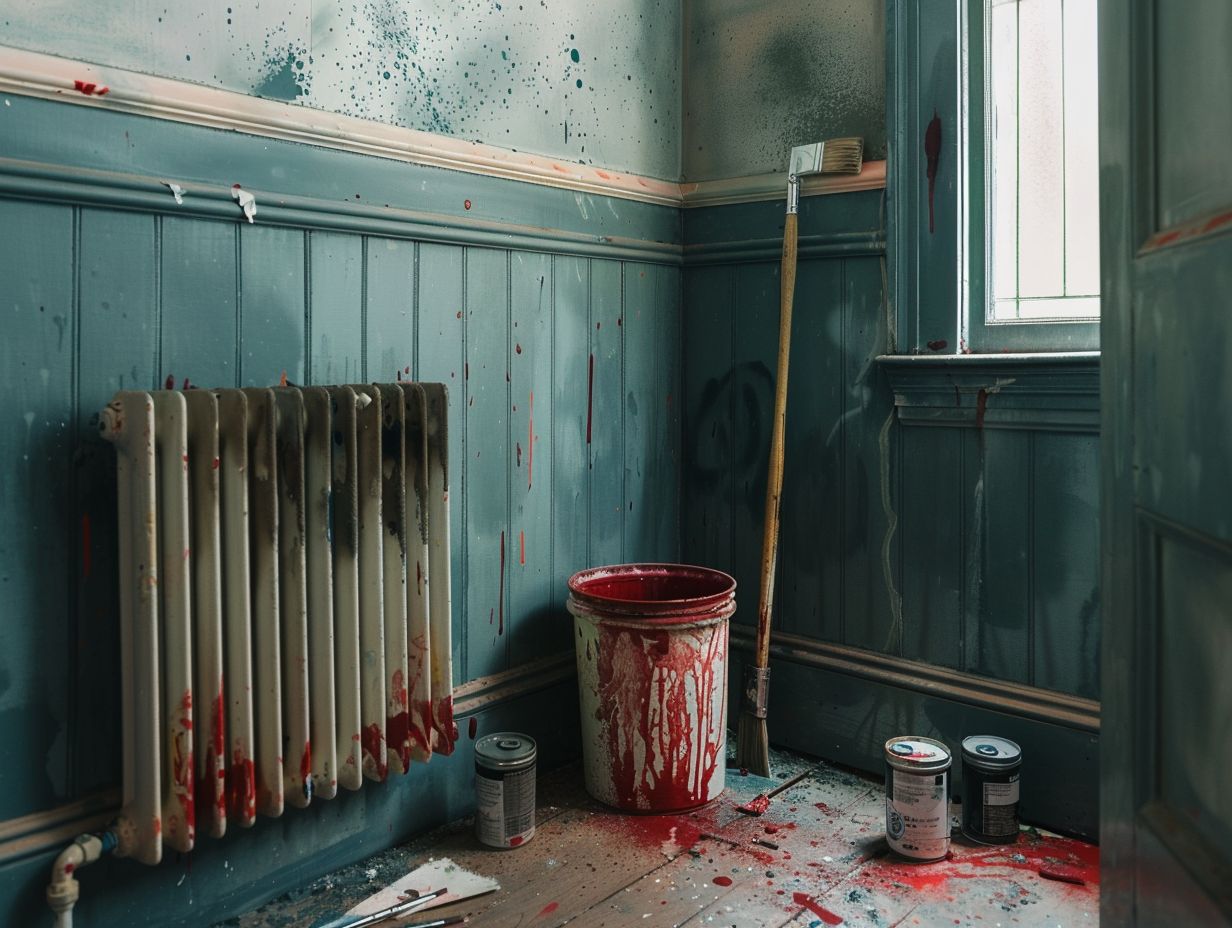
- You can paint a hallway radiator for a fresh and updated look.
- Choose a heat-resistant paint and properly prepare the surface for a long-lasting result.
- Follow proper techniques and regularly maintain the painted radiator for a smooth and clean finish.
Why You Might Want to Paint Your Radiator?
When painting your radiator, consider it as a way to refresh the room’s appearance, whether by adding a splash of colour or providing a clean, polished finish. Selecting a colour that coordinates with the existing decor allows you to harmonise the elements within the room, promoting a unified and cohesive design.
Personalising your radiator with a custom colour can elevate its status from a mere functional element to a focal point, thereby enhancing the overall aesthetic appeal of the space. This cost-effective DIY project offers an instant room update without a significant financial investment.
Whether opting for a matte, glossy, or metallic finish, the colour and finish choices have the power to entirely redefine the room’s ambiance and style.
Potential Risks and Precautions
Before you embark on your radiator painting project, it is crucial to acknowledge and mitigate potential risks to ensure a successful outcome.
One common risk associated with painting radiators is the potential for paint chipping, especially if the surface is inadequately prepared. To mitigate this risk, it is imperative to thoroughly clean the radiator and utilise a heat-resistant primer before applying the paint.
Another risk that should be taken into account is the possibility of overheating if the paint chosen is not heat resistant. To address this concern, opt for a high-quality, heat-resistant paint that can endure the temperature fluctuations of the radiator.
Adequate ventilation is essential during the painting process to prevent any adverse effects on heat distribution.
Choosing the Right Paint for Radiators
When selecting paint for your radiator, it is crucial to choose the appropriate type that will provide a durable finish capable of withstanding heat and maintaining its appearance over time.
When determining the best paint type and finish for your radiators, prioritising heat resistance is paramount due to the high temperatures these surfaces endure. Opting for specialised products like Hammerite Radiator Enamel Paint not only ensures longevity but also delivers superior protection against heat.
Selecting a compatible primer such as ZINSSER B-I-N Primer Sealer is essential for promoting excellent adhesion to metal surfaces, ultimately enhancing the overall durability of the paint job. Employing the correct tools and techniques to apply the paint uniformly across the radiator surface will result in a professional appearance that endures for years to come.
Types of Paints and Finishes
Various types of paints and finishes are available for radiators, each offering distinct advantages in terms of appearance, durability, and application. Gloss paint is a popular choice for radiators due to its high sheen finish that reflects light, providing a vibrant and polished look to the radiator.
It is easy to clean and resistant to moisture, making it a practical option for areas prone to condensation. However, it is important to note that gloss paint can accentuate imperfections on the radiator surface, underscoring the need for thorough surface preparation.
On the other hand, satin paint offers a more subtle shine, delivering an understated finish that can complement both modern and traditional room decor. For radiators in need of a heat-resistant coating, specialised heat-resistant paint is available to withstand high temperatures without compromising its colour or finish.
Considerations for Heat Resistance
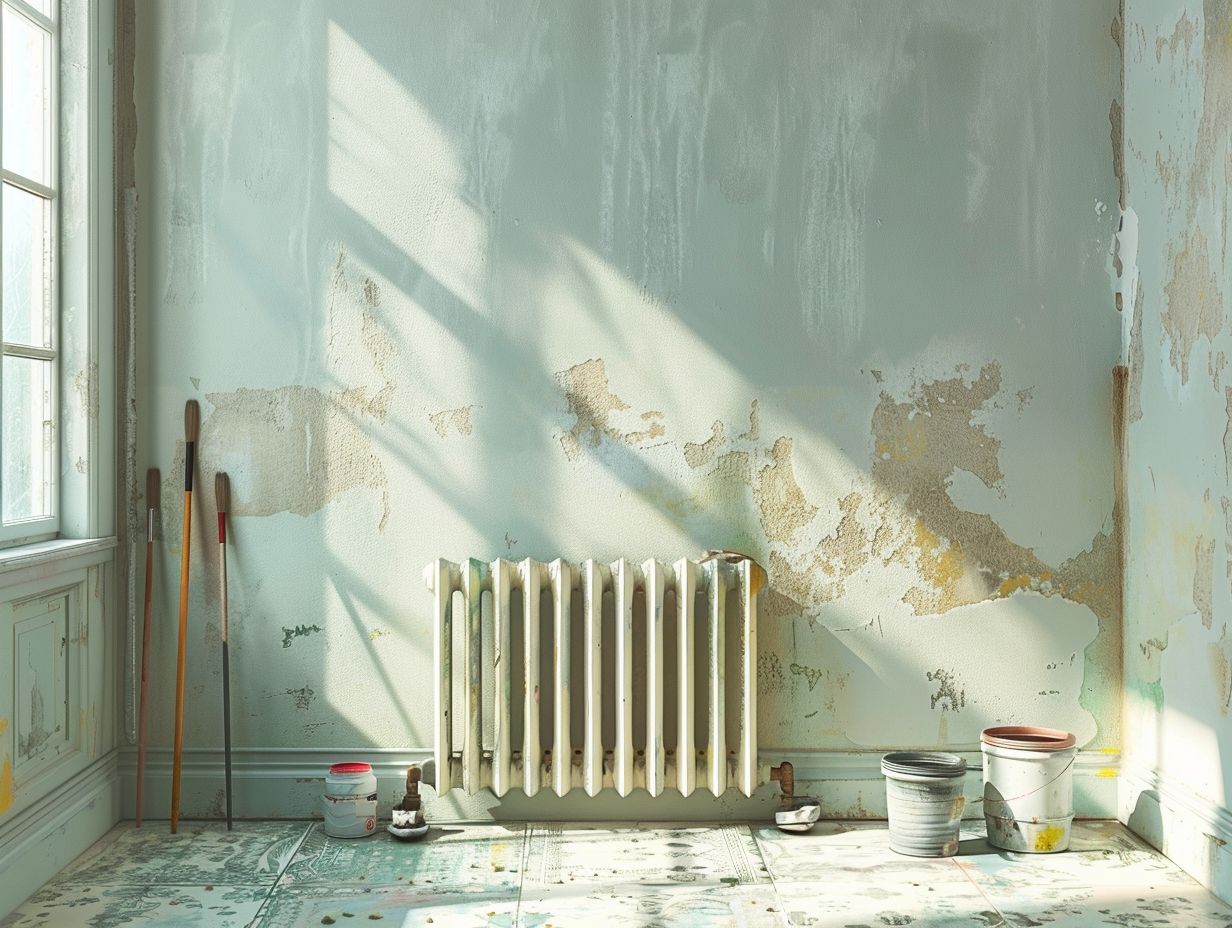
When selecting paint for your radiators, you must carefully assess the heat resistance properties to prevent damage or discoloration resulting from exposure to high temperatures. Metal radiators endure constant temperature variations, making them vulnerable to cracking or peeling if regular paints are used.
Opting for heat-resistant paints ensures that the finish can endure the heat without compromising its color stability over time. These specialised paints typically boast a higher temperature threshold and are engineered to cure effectively even in elevated temperatures.
To bolster durability, recommended practices include thorough preparation of the metal surface, allowing for sufficient drying time between coats, and choosing paints explicitly formulated for high-temperature applications.
Preparing the Radiator for Painting
Properly preparing the radiator surface is crucial for achieving a smooth and long-lasting paint finish that adheres well and resists wear and tear.
To begin, thoroughly clean the radiator surface to eliminate any dirt, dust, or grease that could impede paint adhesion. Utilise a mild detergent solution and a clean cloth for this task.
Once the surface is clean and dry, proceed to lightly sand it to establish a rough texture that will promote better primer adhesion. Opt for a fine-grit sandpaper and employ circular motions during sanding. After sanding, wipe down the radiator again to eliminate any dust particles.
Subsequently, apply an appropriate primer using either a brush or a spray gun, depending on the radiator’s size. The primer serves to enhance both paint adhesion and durability. Allow the primer to fully dry before moving on to the paint application.
By meticulously following these steps and employing the correct tools and techniques, a professional-looking result can be ensured.
Cleaning and Sanding the Surface
Before painting the radiator, ensure that you thoroughly clean and sand the surface to remove dirt, grease, and old paint, which is crucial for proper adhesion of the new coat.
Start by preparing the radiator surface with a sugar soap solution, using a sponge or cloth to scrub off any grime or residue. Rinse the surface thoroughly and allow it to dry completely.
Next, carefully sand the surface with medium-grit sandpaper to establish a smooth base for painting. Employ gentle, even strokes to prevent any damage to the metal.
If there is an existing finish that could impact paint adhesion, consider using a primer sealer following the surface preparation. It is advisable to wear gloves to safeguard your hands during the cleaning and sanding process.
Priming the Radiator
When preparing to paint a radiator, you must apply an appropriate primer to ensure optimal paint adhesion, durability, and a smooth foundation for the topcoat.
Utilising a high-quality primer like ZINSSER B-I-N Primer Sealer is crucial to properly prepare the surface for painting. This primer helps the paint adhere effectively, reducing the risk of peeling or chipping over time.
Formulated to block stains and seal odours, ZINSSER B-I-N Primer Sealer creates a clean surface for your radiator. Follow correct application methods, such as using a brush or roller to apply the primer evenly in a thin, uniform layer, to ensure seamless integration with the surface for the best results.
Allow sufficient drying time according to the manufacturer’s guidelines before applying the topcoat to enhance the bonding and longevity of your paint job.
Painting the Radiator
Mastering painting techniques is essential for achieving a polished and professional appearance on your radiator, elevating the overall aesthetic of the room. Whether you choose brush painting, spray paint application, or utilise specialised tools, each method plays a critical role in attaining a flawless outcome.
To ensure a seamless finish, it is imperative to concentrate on maintaining consistent strokes, blending colours effectively, and selecting the appropriate paint type. The application of a gloss paint coat can deliver a glossy and long-lasting finish, while satin paint offers a more understated and sophisticated appearance.
By focusing on these particulars, you can revamp your radiator into a chic focal point in your living space.
Techniques for a Smooth and Even Finish
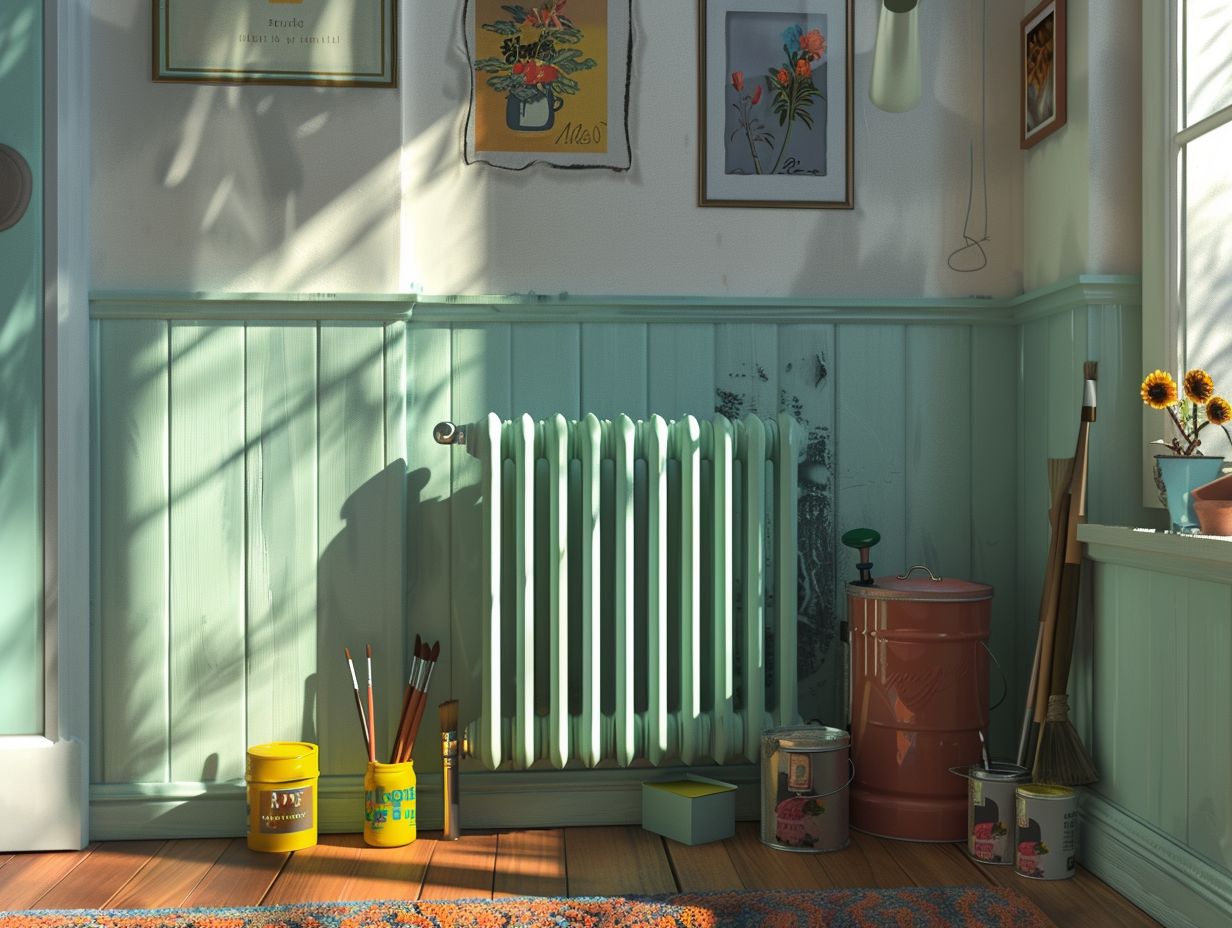
Achieving a smooth and even finish when painting a radiator requires you to use the right tools, apply proper techniques, and pay attention to detail throughout the process.
Long brush strokes in a vertical direction will help ensure that the paint is applied evenly and prevent any streaks. It is essential to use quality brushes or spray cans to achieve a professional finish. Additionally, maintain a clean workspace to avoid any dust or particles settling on the wet paint.
Layering is crucial; allow each coat to dry completely before applying the next to ensure a flawless end result. Opting for a sandblasted surface can enhance adhesion and lead to a durable, perfect finish.
Maintaining the Painted Radiator
Regular maintenance and cleaning are essential for preserving the appearance and longevity of your painted radiator, ensuring it maintains a fresh and vibrant look. Regarding cleaning your painted radiator, a gentle approach is crucial.
To preserve the paint finish, opt for a damp cloth to wipe down the surface, avoiding abrasive cleaners that could harm the paint.
Be attentive to any chips or scratches that may arise, addressing them promptly to prevent further damage. When conducting touch-ups, ensure the new paint blends seamlessly with the existing finish for a uniform appearance.
Consistent cleaning and touch-up maintenance will help keep your painted radiator in excellent condition, enhancing the overall aesthetic of your space.
Cleaning and Touching Up as Needed
Regular cleaning and occasional touch-ups are essential for maintaining the appearance and integrity of your painted radiator, ensuring its longevity and visual appeal.
To clean your painted radiator effectively, start by dusting the surface with a soft cloth or sponge to eliminate any loose particles. For tougher dirt or stains, moisten the cloth or sponge with mild soap and water.
Carefully wipe the radiator surface in a circular motion to prevent streaks and ensure a clean, uniform finish. If you notice minor imperfections like chips or scratches, utilise matching touch-up paint to address them and maintain a seamless appearance. Consistent maintenance not only preserves the aesthetic appeal of your radiator but also extends its lifespan.
Frequently Asked Questions
Can I Paint a Hallway Radiator?
Yes, you can paint a hallway radiator!
What types of paint can I use on a hallway radiator?
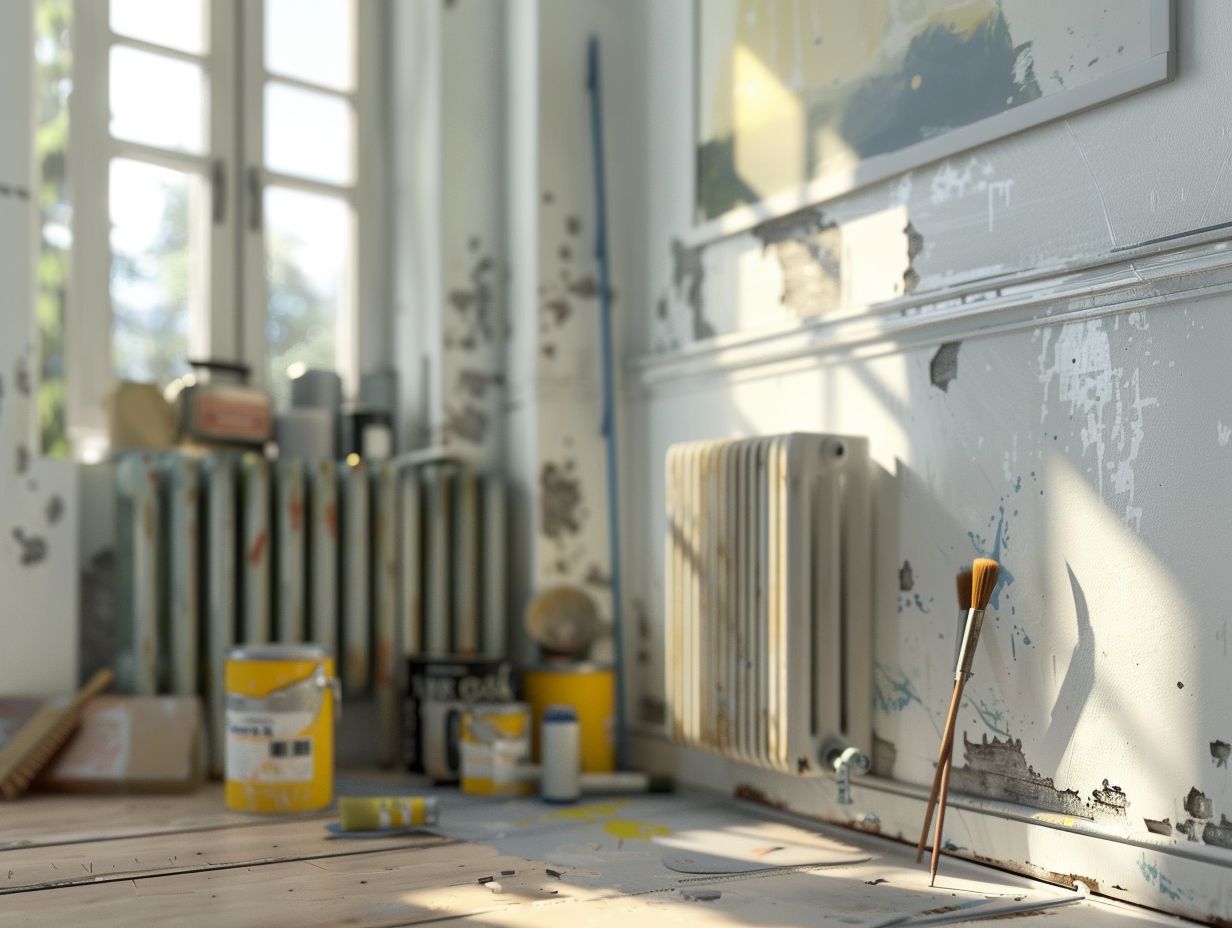
For best results, it is recommended to use a high-temperature paint specifically designed for radiators. These paints can withstand the heat from the radiator without peeling or cracking.
Do I need to prepare the radiator before painting?
Yes, it is important to properly prepare the radiator before painting. This includes cleaning and sanding the surface to ensure the paint adheres properly.
What tools do I need to paint a hallway radiator?
You will need a small paintbrush, a roller brush, a drop cloth, sandpaper, and high-temperature radiator paint. It is also recommended to wear gloves and a mask for protection.
How many coats of paint should I apply?
It is recommended to apply at least two coats of paint for optimal coverage and durability. Let the first coat dry completely before applying the second coat.
How long does it take for the paint to dry?
The drying time for radiator paint can vary depending on the brand and type of paint used. It is best to follow the manufacturer’s instructions for drying time, but most paints will dry within 24 hours.

